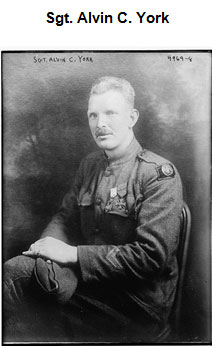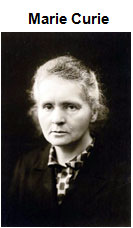There were many important individuals who were involved in World War I. Some individuals were political leaders; some were military leaders; others were important in other ways.
![]() Click on the link below to view the photo gallery of World War I leaders.
Take careful notes for the activity in this section. You will have to sit through some ads.
Click on the link below to view the photo gallery of World War I leaders.
Take careful notes for the activity in this section. You will have to sit through some ads.

Source: Photo, Sgt. Alvin C. York, Library of Congress
Alvin C. York, a native of Tennessee, served in the 82nd Infantry Division of the U.S. Army during World War I. During battle, York took command of his division and led to the capture of nearly 150 German soldiers. He was promoted to sergeant, and later he received the Congressional Medal of Honor. Sgt. York was considered a hero for his bravery. The film Sergeant York, which told his story, was produced in 1941.

Source: Marie Curie c1920, Schewing, Wikimedia
Although she was neither a political nor military leader, Marie Curie played an important role in the war. During World War I, Marie Curie discovered the existence of elements of radium and polonium. Later called "radioactivity," her discovery led to what is known as the x-ray. Curie developed x-ray stations to help the doctors on the World War I battlefield. Her work also led to improvements in cancer therapy. Curie won the Nobel Peace Prize twice, once for physics and once for chemistry. Curie’s discovery of radioactivity helped doctors on the battlefield and made an impact on medicine long after World War I ended.
![]() Complete the following activity using what you have learned about significant individuals in World War I. Read the role of the individual as it appears, and click on the question mark for the corresponding individual to complete the chart.
Complete the following activity using what you have learned about significant individuals in World War I. Read the role of the individual as it appears, and click on the question mark for the corresponding individual to complete the chart.